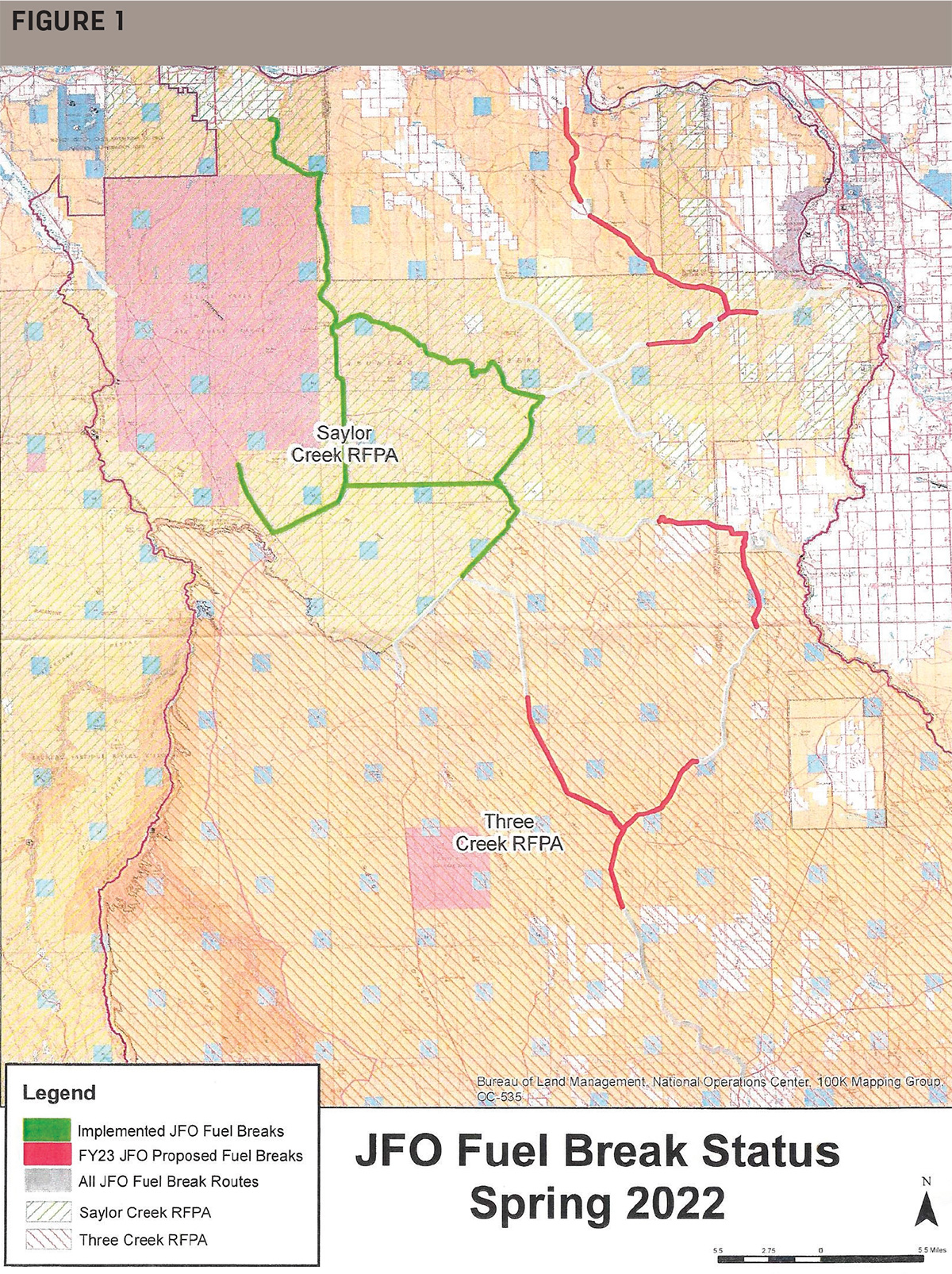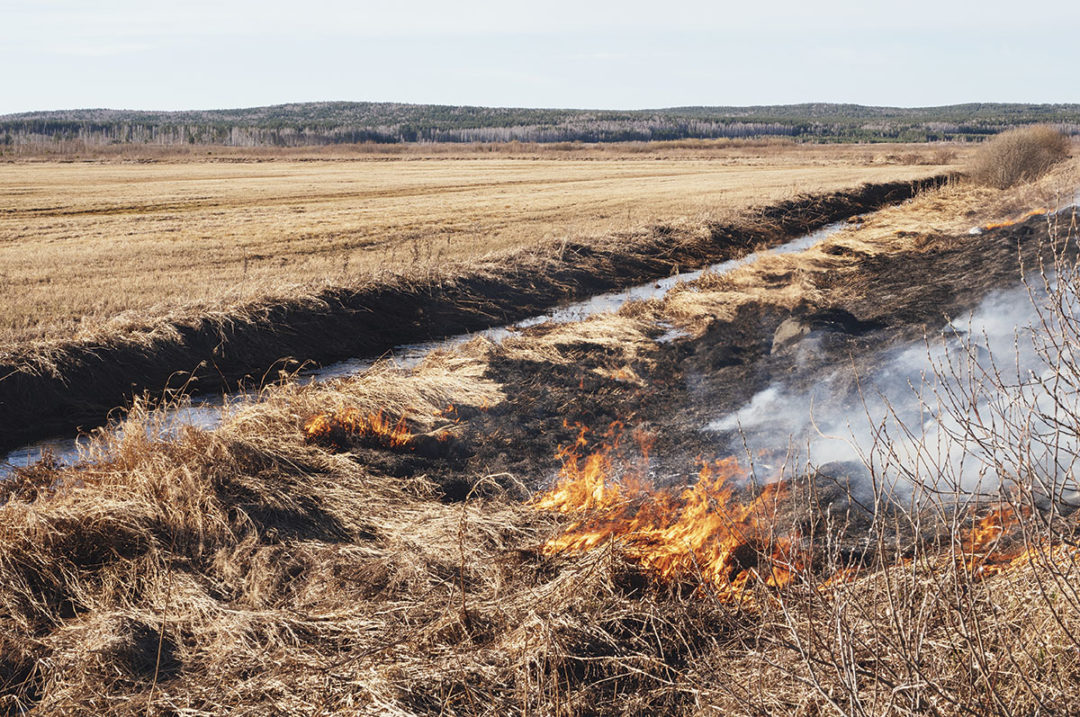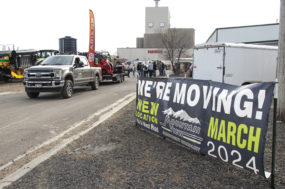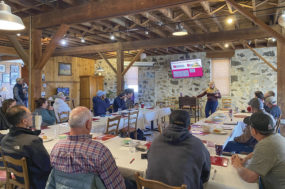With four Bureau of Land Management (BLM) district offices and 12 field offices, the BLM manages nearly 12 million acres of public lands in Idaho, nearly one-fourth of the state’s total land area. Due to increasing fire risk, in 2020 BLM initiated a Programmatic Environmental Impact Statement (PEIS) for fuel breaks in the Columbia – Pacific Northwest, which provides for the construction and maintenance of a system of strategically placed fuel breaks to control wildfires. These fuel breaks will be built in Idaho, Washington and portions of Oregon and Montana along existing roads using manual, mechanical and chemical treatments, along with targeted grazing and prescribed fire.
“Land management agencies such as the BLM and private landowners implement fuel breaks to protect larger areas from wildfire,” says BLM spokesperson Kelsey Brizendine of the Twin Falls District. “Fuel breaks are linear features implemented to break up fuel continuity wherein the vegetation is of shorter stature than the surrounding landscape and will remain green later into the fire season. They are designed to help with fire management because areas such as these will produce shorter flame length, will be less susceptible to roadside fire starts and will give firefighters and managers a safer location from which to engage a wildfire. Specific locations are chosen for fuel break implementation due to their wildfire history and orientation relating to typical fire spread. Fuel break implementation is a long process that typically begins with removing or reducing the existing vegetation and replanting species that have the desired characteristics [short-statured perennials that stay greener longer into the season].”
According to a BLM news release, “The preferred alternative outlined in the PEIS analyzes a full suite of manual, chemical and mechanical treatments, including prescribed fire, seeding and targeted grazing to construct and maintain a system of fuel breaks. These treatments would be implemented along roads and rights of way on BLM-administered lands to minimize new disturbance and wildlife habitat fragmentation and to maximize accessibility for wildland firefighters.”
“The fuel break is created based on the needs of the area and the National Environmental Policy Act [NEPA] requirements for the specific location,” she says. “We have a variety of fuel breaks that we utilize. The appropriate fuel break is determined by several factors. Fire modeling, fuel types and analysis through the NEPA process are used to determine size and type of fuel break.”
“There are several factors that go into the locations of the fuel breaks,” Brizendine says. “Our fuels program works with our fire, range, wildlife and natural resource staff to decide where the most effective locations are. The fuel breaks are created by our in-house staff and contractors depending on the location, NEPA requirements and timelines.” Brizendine says she collaborates with Erik Kriwox, a Jarbidge field office fire ecologist to determine when and where to put fuel breaks.
Examples of fuel breaks
Non-vegetative fuel break or “brown strip”
This can be a very effective fuel break because they are void of vegetation. These are generally established by mechanical means such as disking or chemicals. They do require maintenance to ensure the fuel break stays void of vegetation and to keep noxious weeds out.
Mowing
Fuels are mowed using deck-type mowers. They require maintenance depending on the fuel type. Grass vegetation types require annual maintenance. Shrub or forested areas generally would require maintenance every three to five years.
Chemical
Chemical applications are utilized to control annual invasives such as cheatgrass. This generally requires maintenance of one to three years depending on the herbicide utilized. Chemicals are applied by ground or aircraft.
Vegetative
Changing the vegetation type in the fuel break can lower fire behavior. These can be either native or non-native vegetation types. The determination on what material is used is analyzed in the NEPA process.
Biological
This includes targeted grazing near natural barriers or roadways, generally completed with livestock that is already permitted to be in the allotment. The timing and number of livestock used is analyzed in the NEPA process.

More to be done
“Unfortunately, we don’t currently track the amount of miles that we maintain,” says Chris Cromwell, fire management specialist in the BLM Boise District Office. “Typically, the only metric has been acres, but we are trying to change that. I can speak to Boise but not the other three districts. If you were to include all four districts as well as all the Idaho Transportation Department, county highway departments, Idaho Department of Lands and Forest Service, it would be quite substantial.” BLM Idaho district offices include Boise, Twin Falls, Idaho Falls and Coeur d’Alene.
Even with the work that has been done, more fuel breaks are needed. “Unfortunately, I doubt that we have over half of them in place,” Cromwell says. “Boise BLM has over 1,000 miles approved, yet only about 500 miles in place due mainly to capacity and funding.”
Even though the Jarbidge Fuel Breaks Project reported finding no significant impact of fuel breaks in 2015, a 2020 news release states: “The BLM has extensively documented that fuel breaks, and other types of fuel treatments, are effective. Since 2002, the agency has assessed more than 1,200 fuel breaks and other types of fuel treatments that intersected with wildfires and has found that 78 percent of them were effective in helping to control wildfires and that 84 percent of them were effective in helping change fire behavior.”






